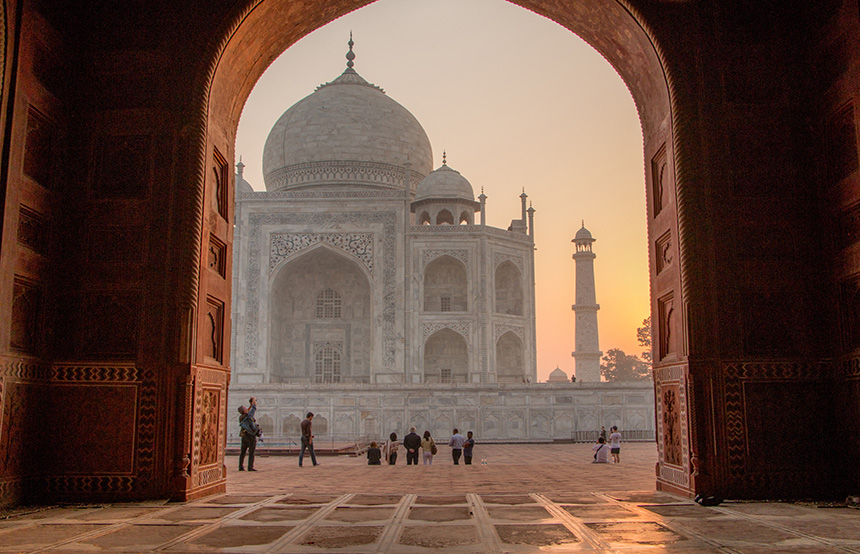
Published 24th Jan. 2023
Reading time
For generations, the Taj Mahal has acted as the poster child of historic India, encapsulating the architectural prowess of the nation and attracting millions of visitors every year. While this Wonder of the World is doubtless worthy of the attention it receives, there are numerous other historic sites that reveal fascinating tales of yesteryear. As part of your trip to India, you can walk down the palatial steps of ancient wells designed to evade droughts, gingerly step into mysterious caves harbouring the birth of Indian art or enjoy a view across bustling Jaipur from the exact same spot as the royal women of the 19th-century. Read on to discover all of our favourite historic sites in India…
What better way to kick off our list of the best historic sites in India than with one of the most iconic and inimitable sites in all of South Asia: the Taj Mahal. While it’s quite well known that this remarkable site is steeped in historical love - with the Mughal Emperor Shah Jahan commissioning the construction of this tomb in 1631 after the death of his favourite wife, Mumtaz Mahal - it is lesser known that the Taj Mahal also experienced its fair share of historical dramas. During the construction of the mausoleum, the Emperor decreed that the hands of the some 20,000 artisans working were to be severed upon completion, in order that no building ever be built more beautiful. Enacting a silent revenge, many workers conspired to create a hole in the roof of the central structure, with the hope of seeing the building collapse shortly after completion. Alas, the conspiracy failed, with the tomb still standing today in all its glory. We can arrange for you to enjoy a guided tour of the Taj Mahal at sunrise or sunset, during which you can learn about many other legends while soaking in the unparalleled beauty of the marble architecture.
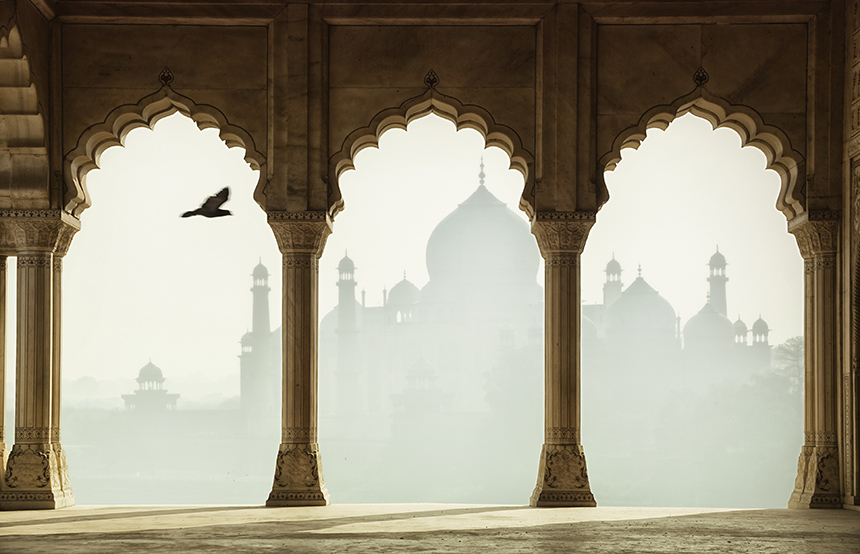
Located just under two miles from the Taj Mahal, the Agra Fort offers a different perspective of the neighbouring mausoleum, as well as an altogether different history of the region. The historical richness of the sandstone-walled city lies in its dynastic heritage: since its construction in 1475 it has been owned by the Lodhi Dynasty, Mughal Empire, and British Empire. The walled city lost popularity after the British moved the colonial capital to Calcutta; nevertheless, since independence the city has regained its former glory, with visitors now coming from all over the world to admire the architecture, history and beauty of one of the most unmissable historic sites in India.
Built entirely in red sandstone to blend in perfectly in the ‘“Pink City’” of Jaipur, Hawa Mahal offers visitors the chance to step into the shoes of the royal women of 19th-century India. During the reign of the Kachhawah dynasty, the many wives of the ruler and the political elite were merely tokens used to form bonds with important families. The women were restricted from being seen in public, instead being forced to live out their lives in the women’s chamber of the city palace. Hawa Mahal - with its 950 windows - was built in 1799 as a sort of architectural veil that allowed the royal women of the palace to view the bazaar and the busy streets below without being seen. We particularly recommend arriving early in the morning, as the sun rise beautifully reflects on the intricate external facade.
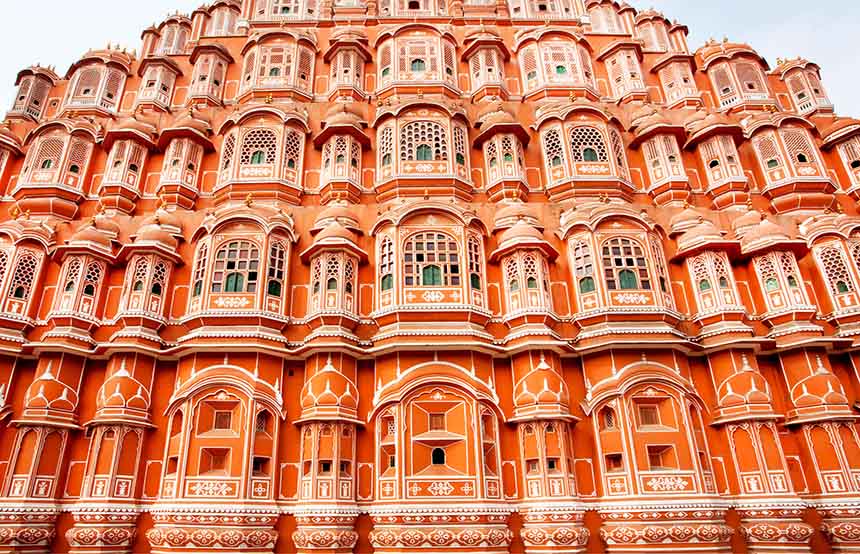
Those keen to step even further back into history need not look beyond the Adjunta Caves. In 1819, a British hunting party were busy tracking down a tiger in the Wagurna River valley in north-central Maharashtra when they came across something that made them forget about the tiger altogether. Hidden behind thick vegetation was a collection of thirty Buddhist temples and monasteries carved into a granite rock face over 2,000 years ago. As they nervously set foot inside the network of caves, they stumbled across yet another phenomenon: a series of ancient paintings depicting Buddhist legends and gods. Today you can step into the shoes of an explorer and rediscover these beautiful caves (26 are open to visitors) at your own pace or with a guide.
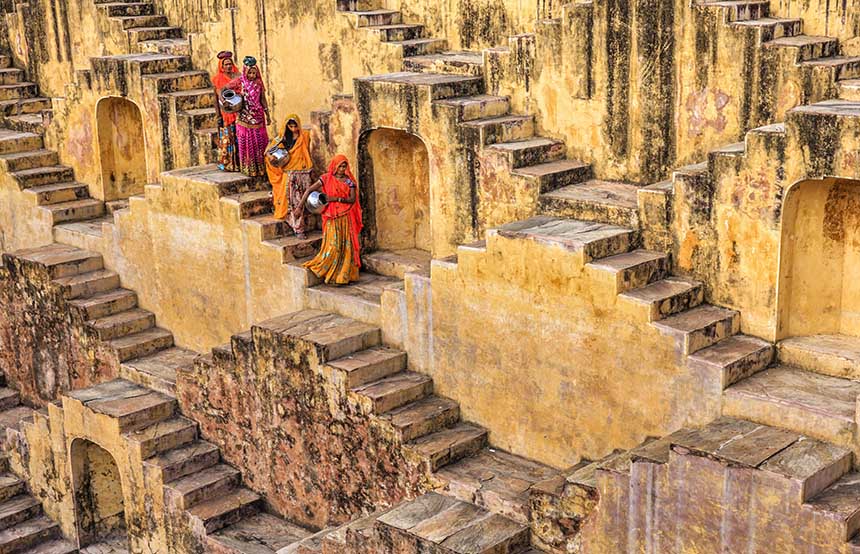
Before the comparatively contemporary regal problems of how to prevent a building as beautiful as the Taj Mahal from ever being built again, the leaders of medieval India faced a more pressing issue: how to source water. A thousand years ago, water in the arid region of Rajasthan was not easy to come by. Step wells dug deep into the ground were therefore a source of pride throughout the region and were designed and decorated accordingly. Chand Baori was commissioned by King Chanda during the ninth century, with the purpose of being so big and so deep that it would provide water for the whole year. It was a resounding success; the resulting step well is 100ft deep, with 3,500 narrow and intricately-designed steps over 13 stories. Unfortunately it's no longer a functioning water source, however it still makes for a beautiful historic site to visit when travelling between Jaipur and Agra.
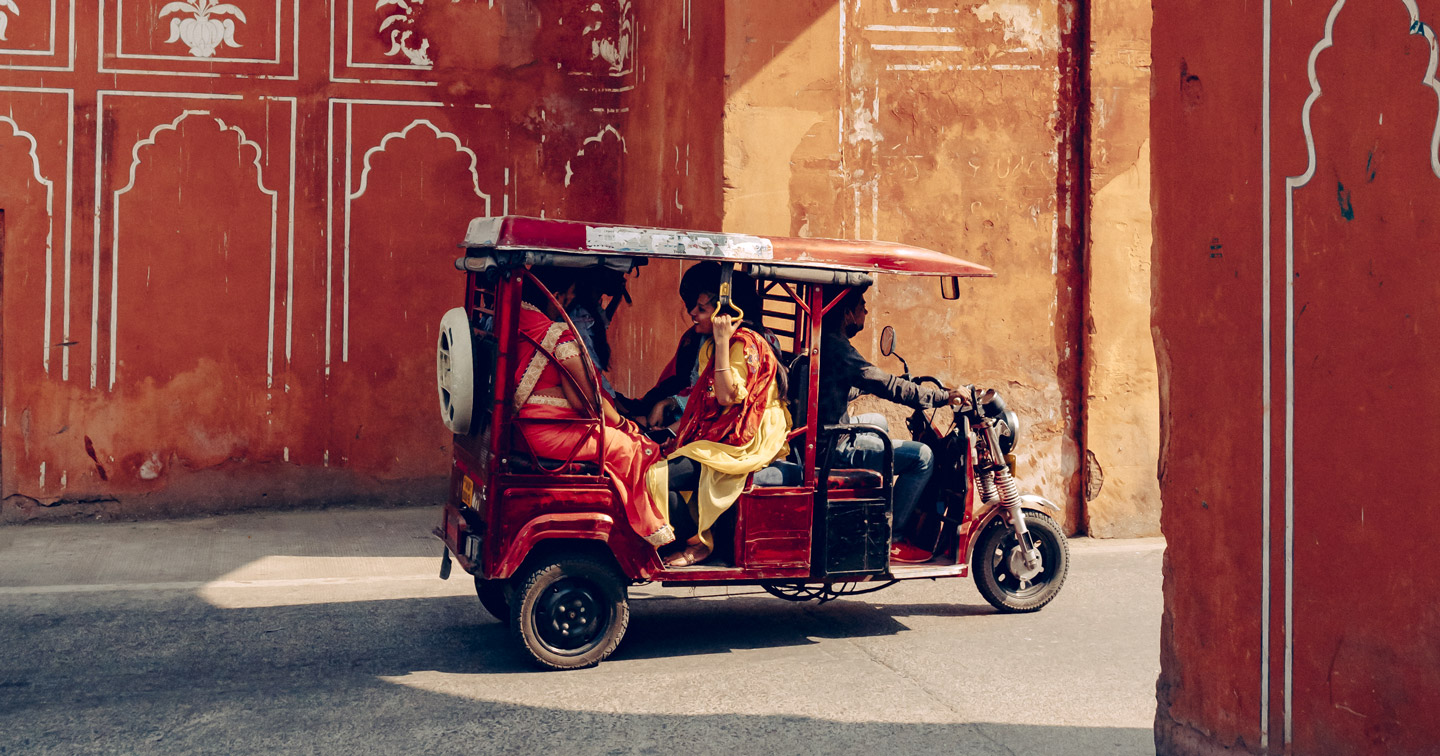
Our eager experts have explored India from its mountainous north to its tropical south in search of the best destinations, experiences and properties. In-country, our passionate team of Concierges share a love of India and are always on hand to impart extensive knowledge of their country. Working with phenomenal local guides across the country, we tailor experiences to your specific interests, from family-friendly block printing in Jaipur to city food tours and off-the-beaten-track wildlife safaris. Whether you’d rather call a historic palace or a humble guesthouse home, we can offer your dream accommodation while in India.
ENQUIRE NOWPractical advice and inspiration for your next trip

Searching for the best safaris in India? We’ve got you covered. Whether you’re keen to track tigers in Madhya Pradesh, admire Asiatic lions in Gujarat or photograph forest eagle owls in Kerala, your India holiday awaits. While Bengal tigers steal the limelight in Bandhavgarh National Park, don’t forget about the shaggy sloth bears (though they’re not as cuddly as they look). Feeling up for the adventure?
15th September 2025 - India Safari & Wildlife

With their sleek, tangerine-tinged coats, piercing eyes and commanding presence, nothing beats the thrill of seeing a tiger in the wild. And where better than in India, home to the largest population on Earth? But when it comes to the best time to see tigers in India, it all depends on what you want from your trip. Whether you’d rather vivid green landscapes or crowd-free safaris, we’ve got the insider intel on when to see India’s famous big cats.
23rd June 2025 - India Safari & Wildlife
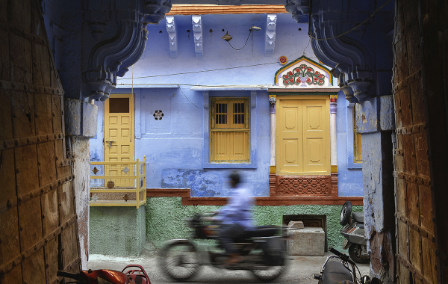
India has long been a favourite destination here at Original Travel. It's the kind of country that inspires a lifelong affinity; travellers become hooked on the kaleidoscope of colour, energy and spirituality that pulsates throughout the nation. From India’s remarkable landscapes and diverse cities to its thriving wildlife and creative cuisine, there’s always more to explore. Keen to discover more reasons to visit India?
25th May 2025 - India Travel Inspiration

Our team of destination experts will get to know you and your unique requirements for your holiday

We work with you to build an ultra-personalised holiday itinerary with your choice of accommodation, experiences and activities

All of our holidays include little extras designed to make a big difference to your trip, from fast-tracking you through airport check-in and security to our network of local Concierges